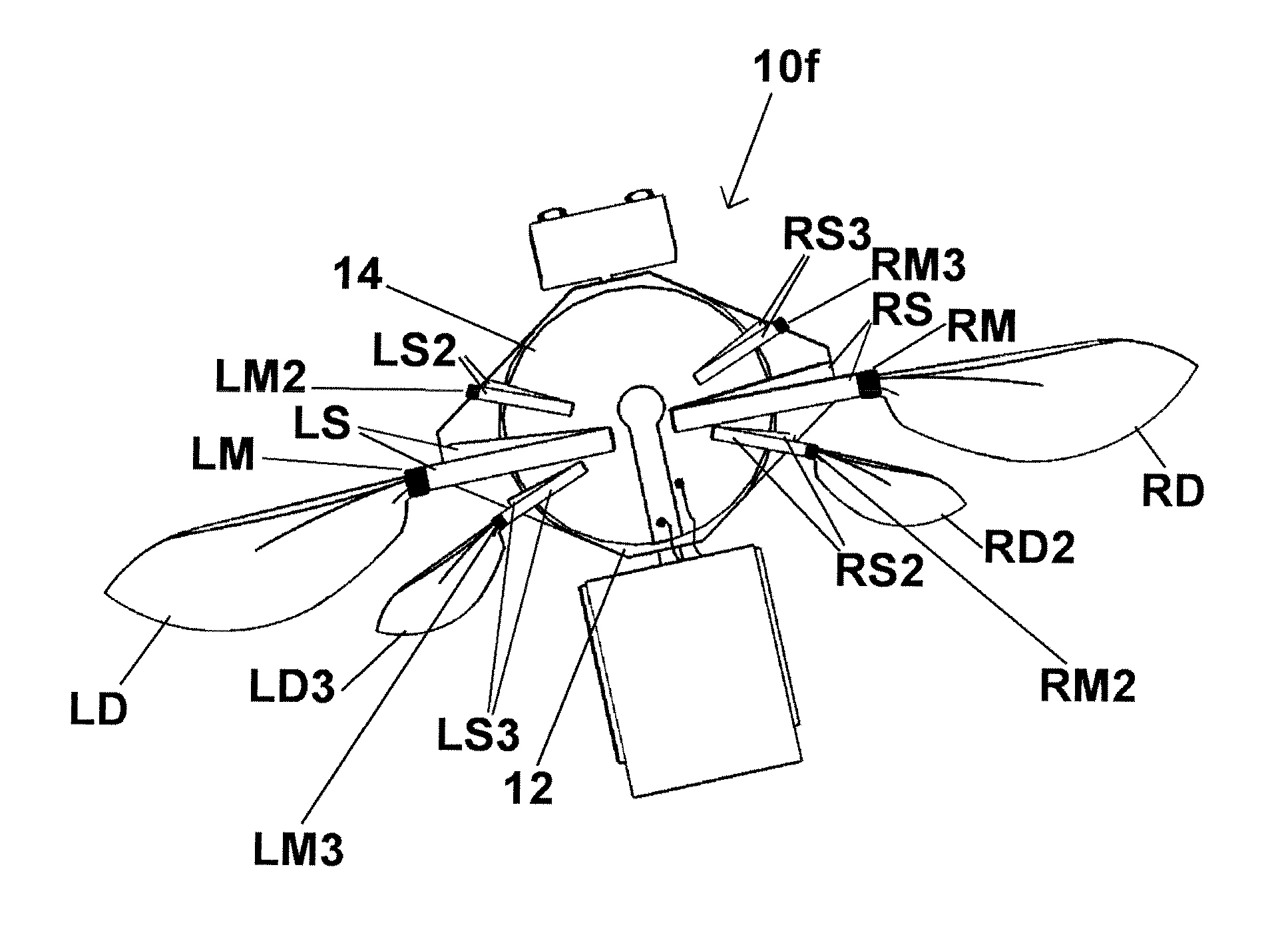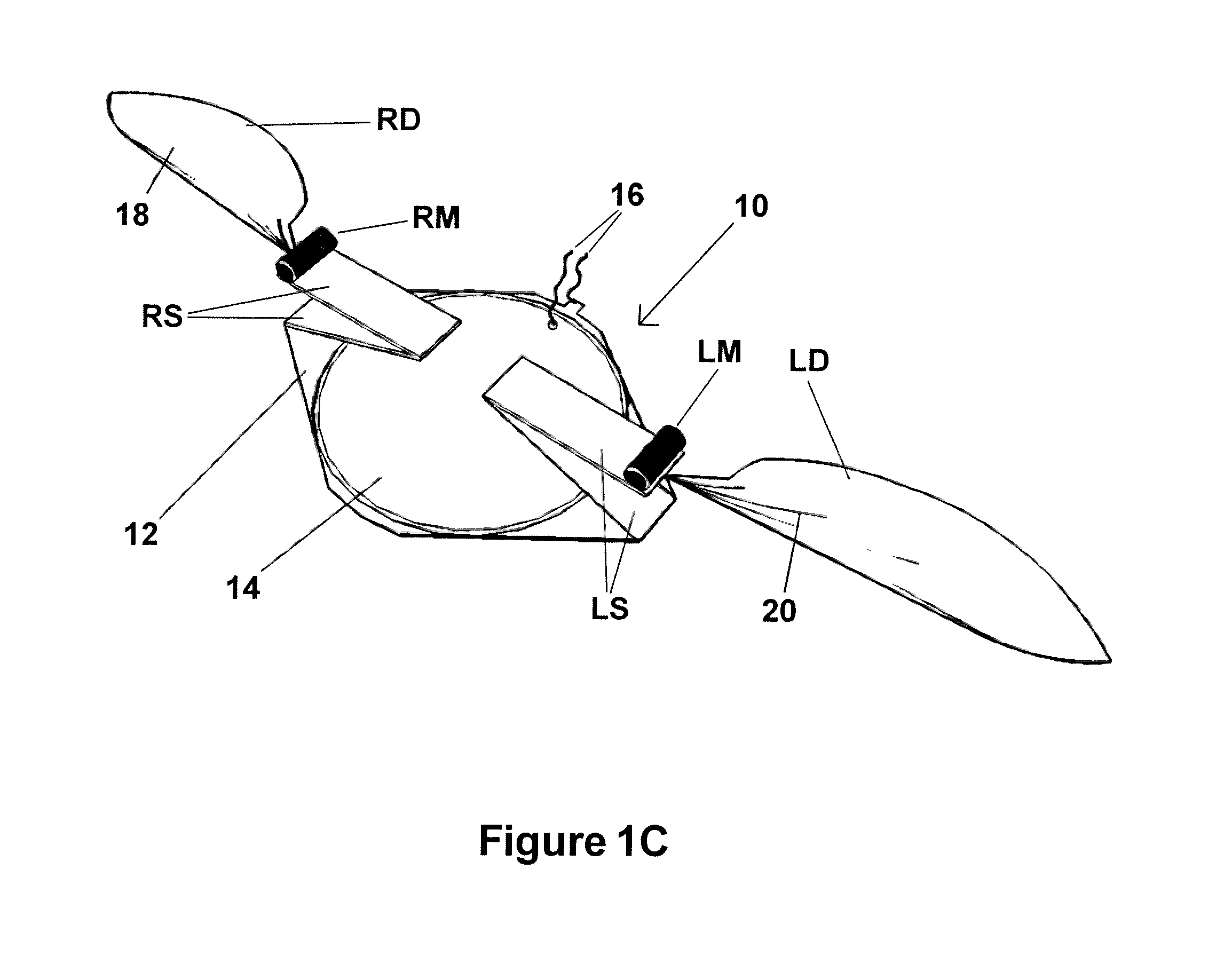Resonance engine
a technology of resonance engine and engine body, which is applied in the direction of machines/engines, mechanical vibration separation, ornithopters, etc., can solve the problems of increasing difficulty, affecting efficiency, and affecting efficiency, so as to achieve optimum efficiency, reduce weight, and achieve effective control
- Summary
- Abstract
- Description
- Claims
- Application Information
AI Technical Summary
Benefits of technology
Problems solved by technology
Method used
Image
Examples
first embodiment
[0044]FIGS. 1A and 1B are respective plan and front elevation views of a NAV having a resonant engine in accordance with the present invention;
[0045]FIG. 1C is an isometric view of the NAV of FIGS. 1A and 1B;
[0046]FIG. 2 shows four wing stroke positions of a schematic NAV with its attitude orientated for static hover and revealing the vertical, horizontal and rotational components of the wing and resonator kinematics;
[0047]FIGS. 3A and 3B show front elevations of three wing positions in the up stroke and then down stoke;
[0048]FIGS. 4A-4D each show schematic NAVs in the top and bottom of the wing stroke positions with wing stroke amplitudes for, respectively: high lift, low lift, roll left, and roll right;
[0049]FIGS. 5A and 5B show respective top and underside views of a remote controlled micro mechanical insect incorporating a resonant engine in accordance with another embodiment of the invention, contrasting with the first embodiment by the addition of six leg resonators, a power s...
PUM
 Login to View More
Login to View More Abstract
Description
Claims
Application Information
 Login to View More
Login to View More - R&D
- Intellectual Property
- Life Sciences
- Materials
- Tech Scout
- Unparalleled Data Quality
- Higher Quality Content
- 60% Fewer Hallucinations
Browse by: Latest US Patents, China's latest patents, Technical Efficacy Thesaurus, Application Domain, Technology Topic, Popular Technical Reports.
© 2025 PatSnap. All rights reserved.Legal|Privacy policy|Modern Slavery Act Transparency Statement|Sitemap|About US| Contact US: help@patsnap.com



